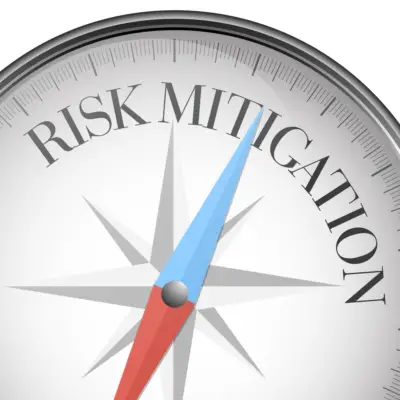In the field of risk management, Risk Control Self Assessment (RCSA) plays a crucial role in identifying and evaluating risks within an organization. Here are the best practices for RCSA.
- Involve employees at all levels to capture a comprehensive risk landscape (source: LinkedIn).
- Prioritize risks based on potential impact and likelihood of occurrence (source: Global Risk Community).
- Periodically revisit the mechanisms for each risk process step (identify, assess, analyze, plan response or treatment, communicate,, and monitor) (source: ISACA).
- Document the control environment (source: 360Factors).
- Identify and evaluate risks (source: AuditBoard).
- Identify specific controls (source: AuditBoard).
- Assess and rate the controls (source: AuditBoard).
- Monitor and report on the controls (source: FinLync).
Implementing best practices in RCSA ensures a comprehensive approach to risk mitigation and fosters a dynamic environment for monitoring potential threats.
This article will explore eight best practices for RCSA in risk management, providing valuable insights and recommendations for organizations seeking to enhance their risk assessment processes.

Definition of Risk Control Self Assessment (RCSA)
Risk Control Self Assessment (RCSA) is a structured and systematic process that organizations use to identify, assess, and manage risks.
RCSA promotes a proactive risk management culture and enhances risk awareness by involving employees at all levels.
This approach benefits organizations from diverse perspectives and knowledge, leading to more effective risk control measures.
Benefits of RCSA in Risk Management
Regularly conducting Risk Control Self Assessments (RCSA) offers numerous benefits in the field of risk management.
RCSA is an integral part of the operational risk framework and plays a crucial role in identifying, assessing, and managing operational risks within an organization.
Implementing RCSA, organizations can enhance their risk management practices and strengthen their internal controls. The benefits of RCSA in risk management include:
| Benefits of RCSA in Risk Management | Explanation |
|---|---|
| Enhanced risk identification | RCSA enables organizations to develop and implement effective risk management plans, ensuring appropriate controls are in place to mitigate identified risks. |
| Improved risk assessment | RCSA provides a systematic approach to assessing risks, ensuring that organizations have a comprehensive understanding of the likelihood and impact of each risk. |
| Strengthened risk management plan | RCSA helps organizations streamline processes and improve operational efficiency by identifying and addressing operational risks. |
| Increased operational efficiency | By identifying and addressing operational risks, RCSA helps organizations streamline their processes and improve overall operational efficiency. |
2 Establishing a Risk Culture
Establishing a strong risk culture within an organization is crucial for effective risk management.
This involves creating an effective risk management process that identifies, assesses, and mitigates risks in a systematic manner.
Additionally, aligning risk appetite with strategic objectives ensures that the organization’s risk-taking aligns with its overall goals.
Lastly, clear communication and engagement from senior management play a vital role in fostering a risk culture, as it sets the tone for risk awareness and accountability throughout the organization.
Creating an Effective Risk Management Process
Creating a robust risk culture is essential for establishing an effective risk management process.
A strong risk culture ensures that risk management capabilities are embedded throughout the organization, enabling proactive identification and assessment of risks.
To create an effective risk management process, consider the following:
- Residual Risk: Understand the remaining risk after implementing mitigation measures, ensuring it aligns with the organization’s risk tolerance.
- Risk Identification: Implement a systematic approach to identify and categorize potential risk events.
- Risk Assessment Methodology: Develop and implement a comprehensive risk assessment methodology to evaluate the severity and likelihood of identified risks.
- Risk Indicators: Establish key indicators to proactively monitor and measure risks, enabling timely intervention and mitigation actions.
Aligning Risk Appetite with Strategic Objectives
Organizations must foster a culture prioritizing risk management to align risk appetite with strategic objectives.
This involves establishing risk appetite statements and ensuring their alignment with the overall organizational objectives.
By integrating risk appetite into the enterprise risk management framework, organizations can effectively identify and manage risks that may impact achieving their strategic objectives.
The RCSA process plays a crucial role in this alignment by providing a systematic approach to assess the operational risk profile of the organization.
The board of directors also plays a vital role in establishing a risk culture by setting the tone at the top and demonstrating their commitment to risk management.
Ensuring Clear Communication and Engagement from Senior Management
Clear communication and engagement from senior management are essential for establishing a risk culture within an organization.
Without it, stakeholders may not fully understand the objectives and expectations related to risk management.
To evoke an emotional response, consider the following best practices:
- Open and Transparent Communication: Senior management should communicate openly and transparently about the importance of risk management, creating a culture of trust and accountability.
- Active Engagement: Senior management should actively engage with stakeholders to ensure their understanding of risk management practices and encourage their involvement in the process.
- Lead by Example: Senior management should set an example by consistently demonstrating their commitment to risk management and adhering to established protocols.
- Continuous Improvement: Senior management should promote a culture of continuous improvement by encouraging feedback and implementing changes based on lessons learned.
3 Identifying Risks and Evaluating Impact
Identifying risks and evaluating their impact is crucial in effective risk management.
Organizations can develop a holistic approach to managing operational risks by understanding the potential risks and their potential impact.
This involves utilizing internal controls to mitigate potential risks and ensure the organization’s resilience in the face of uncertainties.
Understanding the Potential Risks and Their Impact
One essential step in risk management is to comprehensively evaluate and assess the potential risks and their impact on the organization.
Understanding the potential risks and their impact is crucial for developing an effective operational risk management framework.
By conducting thorough risk assessments, organizations can identify the factors contributing to these risks and evaluate their potential impact on the business.
This allows risk managers to make informed decisions regarding risk control measures and prioritize resources accordingly.
The risk control environment can be strengthened by implementing robust risk management processes that incorporate regular risk assessments and the use of advanced risk assessment tools.
By understanding the potential risks and their impact, organizations can proactively manage and mitigate them, ensuring the business’s long-term success and resilience.
- Financial Loss: The potential risks can lead to significant financial loss for the organization, affecting its profitability and sustainability.
- Reputation Damage: Risks that impact the organization’s reputation can result in losing customer trust and loyalty, leading to decreased market share.
- Operational Disruption: Risks that disrupt the organization’s operations can cause delays, inefficiencies, and potential customer dissatisfaction.
- Regulatory Non-compliance: Failure to identify and address potential risks can result in non-compliance with regulatory requirements, leading to legal penalties and reputational damage.
Developing a Holistic Approach to Operational Risks
A holistic approach to operational risks involves comprehensive identification and evaluation of potential risks and their impact on the organization.
This requires collaboration between teams, units, and departments to identify and assess the risks that may hinder achieving organizational goals.
It is important to consider the challenges faced by different units and teams and the potential impact of these risks on the organization as a whole.
The board plays a crucial role in overseeing this process and ensuring appropriate actions are taken to mitigate the identified risks.
Additionally, regulatory requirements must be considered to ensure compliance and minimize legal and reputational risks.
Implementing a control self-assessment framework can assist in identifying, evaluating, and managing operational risks effectively, providing a holistic view of the organization’s risk landscape.
Utilizing Internal Controls to Mitigate Potential Risks
Utilizing internal controls is essential for mitigating potential risks and evaluating their impact on an organization’s operations.
Internal controls are designed to provide reasonable assurance that an organization’s objectives are achieved effectively and efficiently.
Regarding risk management activities, internal controls are crucial in identifying risks and evaluating their impact.
By conducting audits and control self-assessments, organizations can assess their control processes’ effectiveness and identify improvement areas.
This control assessment helps evaluate the organization’s risk profile and operational risk exposure.
It also enables the organization to mitigate operational risk by implementing appropriate control measures.
- Increased confidence in the organization’s ability to manage risks.
- Enhanced transparency and accountability within the organization.
- Reduced likelihood of operational failures and losses.
- Improved decision-making processes and strategic planning.
4 Risk Tolerance & Residual Risk Measurement
In risk management, assessing the existing operational risk framework is crucial to identify potential risks and evaluate their impact.
Once risks are identified, establishing appropriate risk tolerance levels becomes essential in determining residual risk acceptability.
This process involves evaluating each risk’s potential consequences and likelihood, allowing organizations to make informed decisions about risk mitigation strategies and control measures.

Assessing Existing Operational Risk Framework
Assessing the existing operational risk framework is crucial to effective RCSA implementation in risk management.
This assessment includes evaluating risk tolerance and measuring residual risk.
Operational risk is a significant concern for organizations, especially banks, as it encompasses risks arising from internal processes, people, systems, and external events.
Operational risk managers must evaluate the current risk environment and identify gaps in the RCSA process.
Key areas for assessment include the adequacy of risk identification and assessment methodologies, alignment with regulatory requirements, and the integration of operational risk within the organization’s overall risk framework.
By assessing the existing operational risk framework, organizations can better understand their risk appetite, measure residual risk accurately, and enhance their ability to manage financial risks associated with operational activities.
Establishing Appropriate Levels of Risk Tolerance
To effectively establish appropriate risk tolerance levels in risk management, it is essential to assess and measure both risk tolerance and residual risk carefully.
Risk tolerance refers to the level of risk that an organization is willing to accept in pursuit of its objectives.
It is influenced by factors such as the organization’s risk appetite, inherent risks, and the potential financial impact of those risks.
Residual risk, on the other hand, is the risk level that remains after mitigation measures have been implemented.
To establish appropriate risk tolerance levels, organizations need to consider their risk management program, risk awareness, reporting requirements, and the perspectives of key stakeholders.
A proactive approach should be taken to identify risk owners and develop risk transfer strategies where necessary.
Determining the Level of Residual Risk Acceptability
Determining the level of residual risk acceptability involves assessing risk tolerance and measuring residual risk in a comprehensive and systematic manner.
This step is crucial in effective risk management policies and the implementation of best practices in RCSA (Risk Control Self-Assessment).
To ensure that organizational risks are managed appropriately, it is important to consider the following:
- The impact of the residual risk on the achievement of control objectives.
- The level of risk that the organization is willing to accept is based on its risk appetite.
- The potential financial and reputational consequences of the residual risk.
- The alignment of residual risk acceptability with the overall business risks.
By considering these factors, organizations can make informed decisions about the acceptable residual risk level and develop strategies to mitigate or manage those risks effectively.
This approach helps ensure the successful implementation of risk management practices and enhances the overall resilience of the organization.
5 Fostering a Dynamic Environment for Monitoring Risks
Creating a dynamic environment is essential for effectively monitoring risks in risk management.
By fostering a dynamic environment, organizations can proactively identify and address potential risks before they escalate.
This involves continuously evaluating the different types of risk, such as market risks, regulatory risks, and reputational risks, to name a few.
To facilitate this process, allocating sufficient risk management resources and establishing a robust risk taxonomy is crucial.
By categorizing risks and their potential impact, organizations can prioritize their monitoring efforts and take corrective actions when necessary.
Additionally, involving external stakeholders can provide valuable insights and help identify blind spots.
Regularly reviewing the risk of non-compliance and implementing appropriate measures ensures that organizations stay ahead of regulatory changes and maintain their reputation in the market.
| Types of Risk | Risk Management Resources | Corrective Actions |
|---|---|---|
| Market Risks | Skilled and knowledgeable risk management professionals | Implementing hedging strategies to minimize exposure |
| Regulatory Risk | Compliance department and legal counsel | Developing and implementing policies and procedures to ensure compliance |
| Reputational Risk | Public relations department | Developing a crisis communication plan and monitoring public perception |
| Risk of Noncompliance | Internal audit team | Conducting regular audits and implementing internal controls to mitigate risk |
Frequently Asked Questions
What Are the Key Components of a Successful RCSA Program?
The key components of a successful RCSA program include clear objectives, robust risk identification and assessment processes, effective risk mitigation strategies, strong governance and oversight, regular monitoring and reporting, and continuous improvement through feedback and lessons learned.
How Can Organizations Effectively Communicate the Importance of Risk Management to Employees?
Organizations can effectively communicate the importance of risk management to employees by emphasizing the potential impact on business performance, personal safety, and reputation.
This can be achieved through regular training, clear policies, and open communication channels.
What Are Some Common Challenges Organizations Face When Identifying and Evaluating Risks?
Some common challenges organizations face when identifying and evaluating risks include lack of data, inadequate risk assessment tools, poor communication, and resistance to change.
These challenges can hinder effective risk management practices.
How Can Organizations Determine Their Risk Tolerance Levels and Establish Appropriate Risk Thresholds?
Organizations can determine their risk tolerance levels and establish appropriate risk thresholds by conducting a comprehensive assessment of their internal and external risk factors, considering their strategic objectives, regulatory requirements, and industry benchmarks.
What Are Some Strategies for Creating a Culture of Continuous Improvement and Adaptability in Risk Monitoring Processes?
Strategies for creating a continuous improvement and adaptability culture in risk monitoring processes include fostering open communication, promoting a learning mindset, leveraging technology, conducting regular assessments, and providing ongoing training and development opportunities.

Conclusion
Implementing Risk Control Self Assessment (RCSA) in risk management requires:
- Establishing a risk culture.
- Identifying risks and evaluating their impact.
- Measuring risk tolerance and residual risk.
- Fostering a dynamic environment for monitoring risks.
Following these best practices, organizations can effectively assess and manage risks, contributing to their overall success and sustainability.

Chris Ekai is a Risk Management expert with over 10 years of experience in the field. He has a Master’s(MSc) degree in Risk Management from University of Portsmouth and is a CPA and Finance professional. He currently works as a Content Manager at Risk Publishing, writing about Enterprise Risk Management, Business Continuity Management and Project Management.

